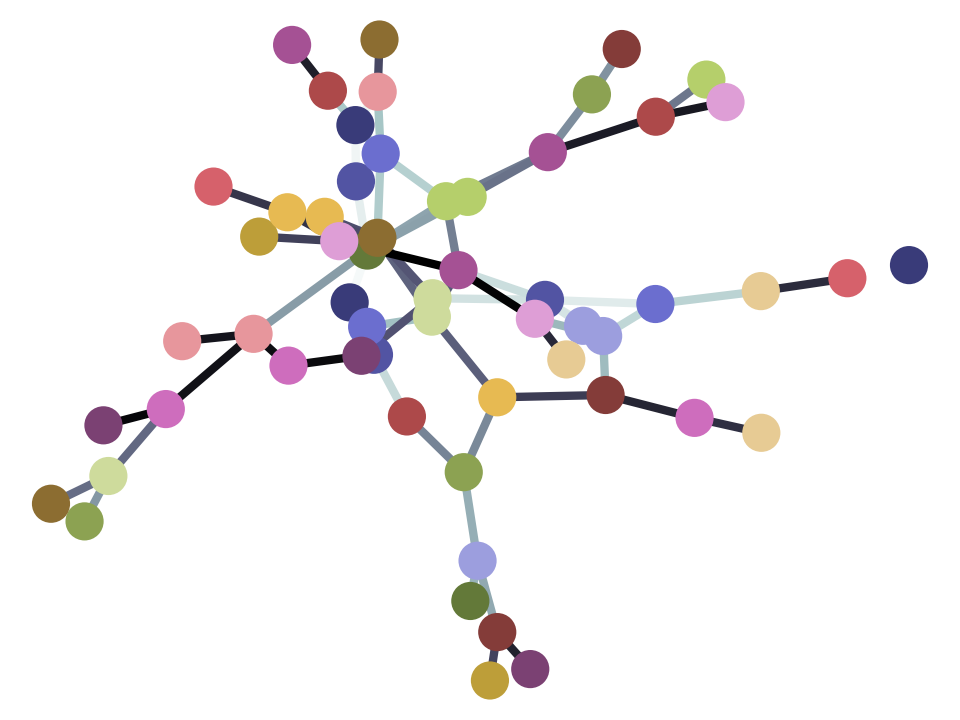The mean and squared differences#
This page assumes a lot more maths than the standard track of the course. In particular, it assumes that you know the basics of finding the derivative of a function.
In practice this means that, if you are in the US, you will need to have taken pre-calculus and calculus at school or university, and if you’re in the UK, that means you will need A-level maths. That said, the algebra and calculus you need here are basic enough that, if you are motivated, you could teach yourself what you need from web resources or an introductory textbook.
Nothing in the rest of the course assumes you can follow the mathematics in this page. The page is just for those of you who are interested, and do know that part of mathematics.
In the meaning of the mean we were studying prediction errors.
We imagined using the mean of a set of value as a predictor for those values. Then we looked at how far off we would be, on average, if we use the mean to predict each value.
Let’s say we have a sequence of \(n\) values. For example, \(n\) could be 8. Call the first value \(x_1\), the second \(x_2\) and so on, up to \(x_n\). For example, if \(n = 8\), then the sequence of eight values would be \({x_1, x_2, x_3, x_4, x_5, x_6, x_7, x_8}\). In general I can write the sequence of \(n\) values as \({x_1, x_2, ..., x_n}\).
We often want to add up all the values, for example, when we calculate the mean. I could write \(x_1 + x_2 + ... + x_n\), but that is rather long and clumsy. The mathematical shorthand for this is \(\sum x_i\), meaning add up all the values in the sequence \({x_1, x_2, ..., x_n}\).
We can write the mean using this notation. Use the symbol \(\bar{x}\) to refer to the mean of the sequence \({x_1, x_2, ... x_n}\). Then the definition of the mean is:
The \(\triangleq\) symbol means is defined as.
Now we have the notation, we can return to our problem.
We are to going to take some value \(c\), and subtract it from all the values in \({x_1, x_2, ... x_n}\). This will give us a new sequence of deviations or errors \({x_1 - c, x_1 - c, ..., x_n - c}\). Then we will square the errors, to get \({(x_1 - c)^2, (x_2 - c)^2, ... (x_n - c)^2}\), and finally we will add up all these squared errors: \(\sum (x_i - c)^2\). Call this, the Sum of Squared Errors or \(SSE\) for a particular value \(c\). So:
This is the general formula for the specific plot we saw at the end of the meaning of the mean page, where the value for \(c\) is on the horizontal axis, and the value for \(SSE_c\) is on the vertical axis.
We want to find the value of \(c\) that gives the smallest value for \(SSE_c\).
The plot turned out to be U-shaped; we want to find the horizontal axis location (\(c\) value) corresponding to the bottom of the U (minimum of the corresponding \(SSE_c\) values).
We can find this location by transforming the formula in (1) above into a formula for the gradient of the line that (1) represents. This is taking the derivative. When the derivative of equation (1) is equal to zero, it means the gradient of (1) is 0, and this is true when we are at a peak or a trough of (1). We want the trough.
Let’s start by expanding out equation (1), and using the laws of sums to simplify the result:
Now differentiate with respect to \(c\):
When equation (2) has value zero, we can be at a peak (the gradient is zero, but it’s about to become negative) or a trough (the gradient is zero, but it’s about to become positive).
Find the zero(s) for equation (2):
Equation (2) only has one zero, and it is when \(c\) is equal to the mean.
We so far don’t know if this single zero is at a peak or a trough, but we can differentiate equation (2) again, to see the slope of the slope. If this is positive at \(c = \frac{1}{n} \sum x_i\), than the slope is changing to be positive, and we would be at a trough, if it is negative, the slope is changing to be negative, and we would be at a peak. Here’s the derivative of equation (2), also called the second derivative:
\(n\) is always positive; this means that the second derivative is always positive, and therefore, it is also positive at our zero point \(c = \frac{1}{n} \sum x_i\). So, equation (1) only has a one trough, at \(c = \frac{1}{n} \sum x_i\), and no peaks.
Therefore the mean \(\frac{1}{n}\sum x_i\) is the value \(c\) that minimizes the sum of squared errors, also called the sum of squared deviations, also called the sum of squared prediction errors.
